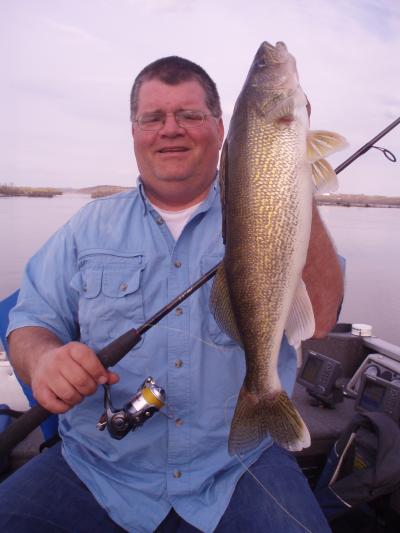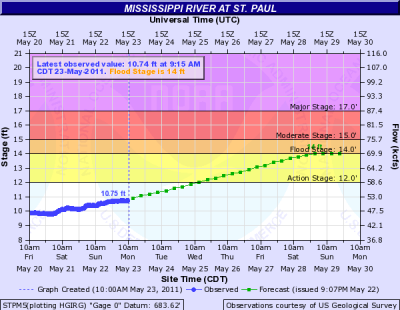Muddy Waters Guide Service
Well its starting to look like we may have another year of high water on our hands on the Mississippi River. From the spring floods at first I thought the levels may drop off fairly fast but with the hit and miss rain we have been getting, much of the state still holding a ton of water and a forecast calling for rain every day this week it looks like another high water river fishing season may be upon us. Not that that is all bad.
Here are a few tricks I use for approaching high water walleyes.
First of all Yes walleyes do feed in high water. They feed very aggressively in high water especially as the water temps warm to summer levels. The trick is finding them as they can be pushed into very small areas. It can also be challenging to get a lure properly presented to them with high currents and debris fouling the lines. The extra effort it takes to finding these hungry fish can well be worth the rewards as many time when one fish is found many other will be using the same area.
In very high flows my hunt for hungry walleyes usually starts off the main channel or very tight to the shorelines. In extreme high flows where the water is flowing over many of the river islands my fishing is almost always way back in the back waters. Im looking for rock and gravel areas back there. Channels with less flow that have current breaks in them and maybe some good wood structure. Sometimes even areas with a lot of wood laying on the bottom and flow going over them. Spots like this offer great areas for hungry walleyes to hide behind and dart into the current as a meal comes to them.
There are many ways to fish high water walleyes but my favorite are pitching jigs, crank baits, blade baits or long line trolling crank baits. Ill just let the location, water conditions and fish dictate what Im going to use and how to present it. A perfect example is finding active fish on a long stretch of rocky shoreline. Normally I may start with long line trolling this but if there is to much debris in the water that day I may switch up to pitching or vertical jigging. Give the same situation with a strong wind and good water conditions and I may be back to trolling. The good thing is once the fish are found in high water they tend to feed very aggressively and are willing to hit many different lures and presentations. Much more so than in low water conditions. If one presentation is not working do not hesitate to try another.
For jig fishing in high water live bait is usually reserved for a back up to using plastics, hair jigs and crank baits. As the fish are aggressively hitting lures the finesse approach of live bait is mostly not needed. For jigs white plastics are always a good bet in high muddy water. Another favorite is purple/chartreuse tail ring worms and paddle tails. For jig heads bright colors rule again in the high muddy river conditions but what may surprise many people is you do not always have to bulk up the jig weights in these conditions. 3/16th to 5/16th are still my most common sizes in high flow conditions. It is not until water levels drop and I move back out to the main channel that jig sizes start to get bulked up. Fishing these mid weight jig sizes gives you a good idea of what type of flow Im fishing. Keep in mind no mater how high the water gets there is always areas of less current and lower flow somewhere.
For casting and trolling crank baits there is not a lot of difference than what we use under normal water levels on the river. Match the diving abilities of the crank to the water depths you are fishing. I prefer cranks with rattles in them as the fish have limited sight in muddy water and the noise I believe helps them key in on the lures. For this same reason very bright colors can also help fish find the lures and having them tick the bottom while trolling will help with this also. Crank baits can be fantastic in high river conditions but on some days can be almost unfishable. Leaves and grass in the water which is common in high flows can quickly foul out these lures and cause you to constantly clean them or even get to the point that its to troublesome to fish them. At that point its very good to know there are many other ways to catch a walleye in high water conditions.
So in closing if this season plays out anything like last year on the Mississippi river and you are waiting until lower flow levels to go chase those hungry walleyes you might just be waiting your summer away. Those fish are still there and waiting for something to come by and tickle there nose so they can strike at it. You may have a little more time on the water spent looking for these hungry fish but once found the rewards can be great.
Good luck to those that are getting out and I know there are many other approaches and presentation that work in high water conditions. Please add what works for you to this post.





